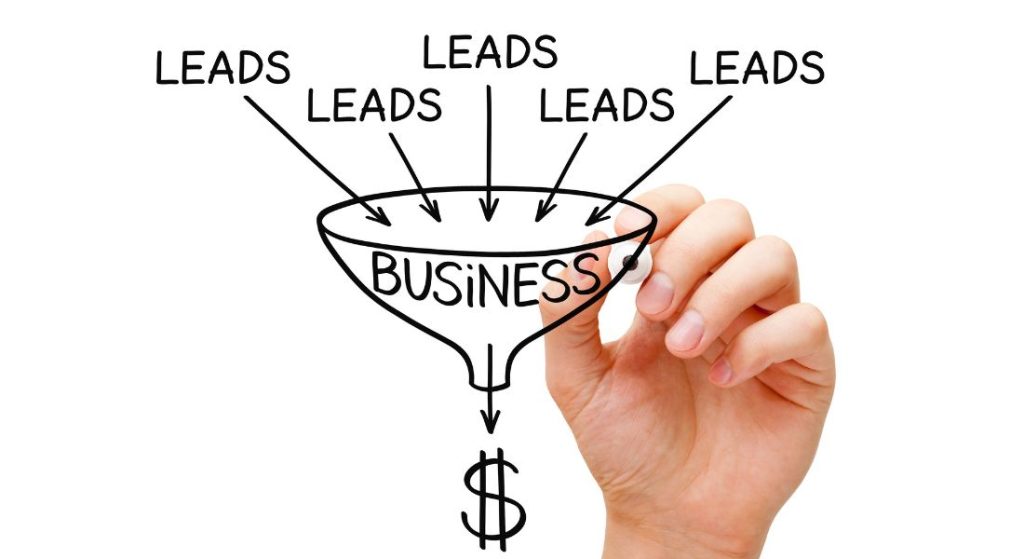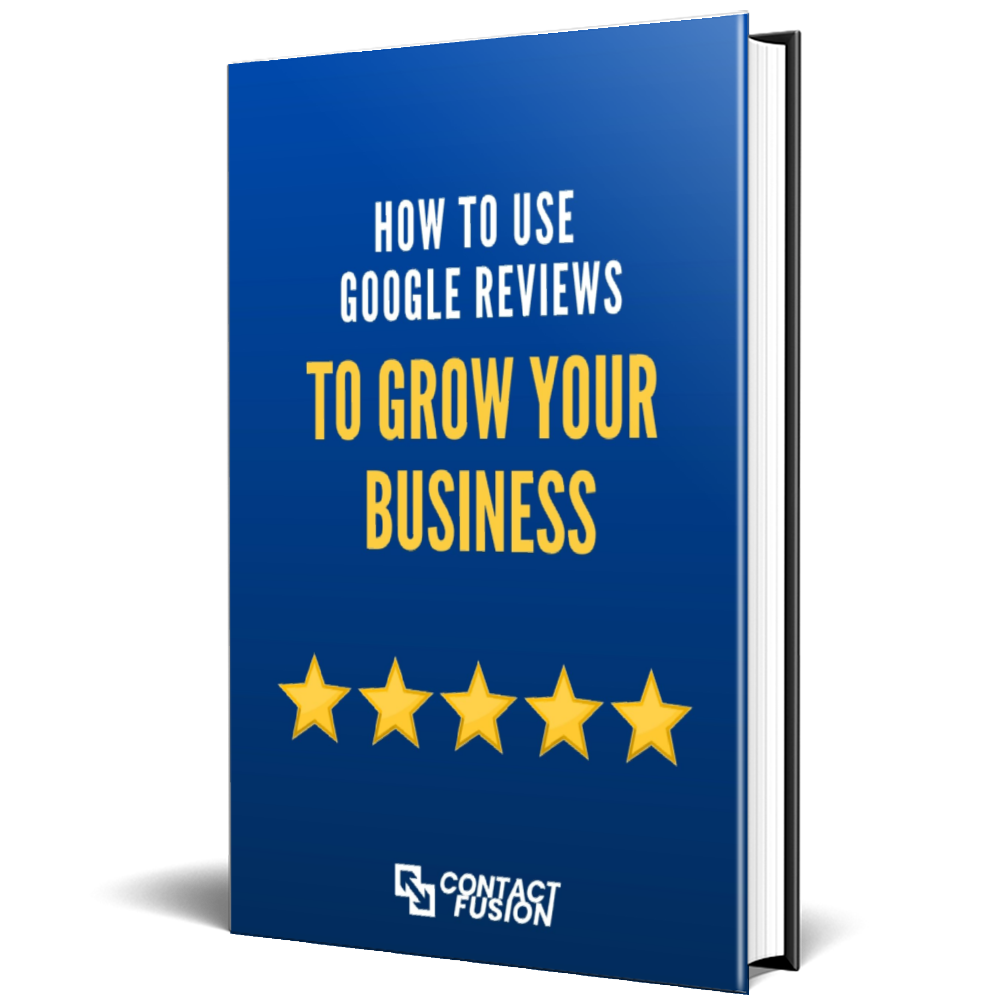The Ultimate Guide to Lead Generation: How to Generate More Leads for Your Business
Imagine this: someone on your sales team comes to you with the news that your sales pipeline is flooded with high-quality leads, your marketing team is celebrating the skyrocketing conversion rates, and your business is thriving like never before.
Sounds like a dream come true, right?
Well, buckle up, because this Ultimate Guide to Lead Generation is about to turn that dream into a reality! Get ready for lead generation secrets that will supercharge your business growth like never before.
Are you prepared to unlock the hidden potential of AI-powered prospecting tools, find ways to maximise your budget, and dominate your market niche? Dive in!
Our lead generation guide covers everything you need to know about generating high-quality leads for your business. From identifying your target audience to developing effective marketing campaigns, this guide provides step-by-step instructions and practical tips for each stage of the lead generation process.
Additionally, we provide real-life examples of effective lead generation campaigns to inspire you and give you ideas for your own campaigns.
Whether you are a small business owner or a marketing professional, our lead generation guide is an essential resource for driving growth and increasing revenue.
Understanding Lead Generation
Google Analytics 4 (GA4) is a robust analytics service that offers advanced capabilities for collecting and analysing data from multiple sources. Whether you are a website owner or a marketer, getting started with GA4 provides the foundation for data-driven decision making. To help you get started, this section will guide you through the steps needed to start using GA4.
Let’s say you run an eCommerce store and want to track your website’s performance. With GA4, you can monitor key metrics such as visitor behaviour, traffic sources, conversions, and revenue. By tracking these metrics over time, you can see how your website performs and which marketing efforts are driving the most revenue.
Before setting up GA4, it’s important to understand that GA4 differs significantly from Universal Analytics (UA). Unlike UA, which tracks sessions and pageviews, GA4 focuses on events and user behaviour. This means that you will need to rethink your measurement strategy under GA4. Furthermore, because GA4 is an entirely new platform, migrating from UA to GA4 requires careful planning and execution.
Understanding Lead Generation
In the world of business, lead generation has become a fundamental aspect that determines success or failure. Why does a person running a business need lead generation? Simply put, lead generation ensures that your business has potential customers. It is the process by which prospects’ interest is triggered in a company’s product or service. Without lead generation, it would be difficult to attain new customers and sustain growth.
Here’s an analogy to help understand lead generation: imagine a net. The purpose of the net is to capture fish and ensure a successful catch. Just as a fisherman needs a net to catch fish, businesses need lead generation techniques to catch potential customers. Hence, think of lead generation as that essential net to capture potential buyers for your business.
Lead generation consists of different stages, with each stage requiring specific attention and nurturing. As such, understanding each stage in-depth will give you a foundation on how to approach lead generation successfully.
To put this into perspective, let’s use John as an example, who runs a family-owned plumbing business. John wants to reach out to more clients who require plumbing services but doesn’t know where to start. After researching online, he discovered that by publishing informative content related to plumbing such as blog posts or video tutorials on social media platforms, he could attract potential clients who are in need of plumbing services. In doing so, John would have initiated the first stage of lead generation— attracting visitors through marketing channels and providing value.
Understanding your target audience is key when generating leads. The aim is not just to draw any visitor but rather those who are interested in your product or service. This often involves crafting messages specific to the audience you want to attract using techniques that drive traffic for better chances of conversion.
Another important aspect of lead generation is the optimization of landing pages. Landing pages are web pages designed specifically to convert website visitors into leads by offering them something valuable such as an e-book or free consultation in exchange for their contact information.
By analysing the various points of your sales funnel, you can fine-tune your marketing channel to better serve your target audience and improve your overall lead generation strategy.Hence, landing pages are usually optimised to encourage visitors to take action by filling out a form, providing their name, and other personal information needed for the conversion process.
A well-designed landing page captivates readers, includes an attention-grabbing call-to-action (CTA), and streamlines the sales process.
Lead Generation Techniques
One might argue that instead of relying on specific lead generation techniques, businesses could just buy leads or cold-call potential customers.
However, the problem with these methods is that they typically attract low-quality leads resulting in a low conversion rate. Moreover, purchasing leads and cold calling have been found to be intrusive and often seen as spammy, making it difficult to establish meaningful relationships with clients.
In the next section of this article, we will explore the different types of leads that exist and why knowing them is important for developing an effective lead generation strategy.
We will compile a comprehensive list and address questions that may arise regarding these lead types.
Lead generation is a crucial aspect of business that helps businesses attain and sustain growth. It involves a process of attracting potential customers through marketing channels, understanding the target audience, and optimising landing pages to convert website visitors into leads.
Using specific lead generation techniques is more beneficial than buying leads or cold-calling potential customers, which often result in low-quality leads and a low conversion rate. Knowing the different types of leads is essential for developing an effective lead generation strategy.
Do you need more leads for your business?
Different Stages of Leads
The different stages of leads signify where a particular prospect stands in their journey towards becoming a customer. Understanding these stages is essential in nurturing leads into customers and knowing the number of leads at each stage.
Marketing qualified leads (MQLs) are prospects that have shown interest in your business through marketing efforts but not yet ready to make a purchase. MQLs may have signed up for your newsletter or attended a webinar put together to inform potential clients about your product or service.
Sales qualified leads (SQLs) signal that the prospect has moved from interest to an active search for products or services like those you offer. SQLs generally indicate higher engagement levels than MQLs.
Product-qualified leads (PQLs) show that prospects have interacted with your product or service offerings adequately, and there’s an established need to purchase.
Lastly, Service-qualified leads (SQLs) come after clients have purchased goods/services and now seek additional support such as training programs or conferences related to their purchases.

Understanding the Different Stages of Lead Generation
Here’s an example of how understanding different stages of lead can improve your lead generation techniques: Anna runs a marketing consultancy firm that focuses on increasing sales and conversions.
By understanding the different types of leads, Anna can personalise her marketing strategy in such a way that she is not targeting SQLs as MQLs or vice versa. This ensures that potential clients get information tailored specifically for their stage in the customer journey.
Knowing where a potential client stands in their customer journey enables you to reach out with tailored content such as blog posts or product demonstrations at the appropriate time to increase conversion rates and optimise sales efforts.
Some may argue that focusing only on SQLs will produce better results.
However, reaching all four stages of leads through a well-crafted lead generation strategy has a higher potential to develop long-term relationships with clients while building brand loyalty.
Understanding the different stages of leads is critical when developing an effective lead generation strategy. In the next section, we’ll take an in-depth look at diverse lead generation strategies businesses should employ to attract and nurture potential customers across each stage.
Diverse Lead Generation Strategies
Lead generation strategies are crucial for any business that aims to increase its customer base and grow exponentially. Generating high-quality leads involves a lot of effort, time, and resources. In this section, we’ll address questions about some diverse lead generation strategies and how they can benefit your business.
One effective lead generation strategy is networking and event marketing. Attending conferences and industry events provides an opportunity to connect with potential customers face-to-face. By building relationships with prospects at such events, you can promote your company and brand, showcase your expertise, and create new business opportunities.
These events may also lead to post-event sales, further establishing connections and strengthening your sales funnel.
Another cost-effective lead generation strategy is paid advertising. Paid ads can be targeted to reach specific audiences across multiple platforms such as social media, Google Ads, or LinkedIn Ads.
The key is to target the right audience with the right message at the right time. Utilising various ad forms, tracking links, and following strategic steps can help optimise the flow of leads into your sales funnel.
While paid advertising is a powerful tool in lead generation, it offers no guarantees that potential buyers will engage or convert into paying customers. It works best when combined with other strategies such as content marketing or SEO.
Generating leads through content marketing is like planting a seed that grows over time and generates long-term results. Creating original content that educates, entertains, or informs your target audience on topics related to your products or services draws traffic to your site and generates leads.
Do you need help with your Lead Generation?
Content Marketing & SEO
Content marketing is one of the most important tools for generating leads today. A well-executed content marketing strategy engages prospects and attracts them to your website by providing valuable information. In this section, we’ll discuss reasons why content marketing should be part of your overall lead generation strategy.
Firstly, content marketing drives more traffic to your website which ultimately results in more leads. According to research by HubSpot, businesses that blog get up to 55% more website visitors than those that don’t.
Secondly, content marketing allows prospects to educate themselves about your products or services and position your brand as the go-to authority in your niche. For example, creating in-depth guides on topics related to your industry, hosting webinars that address common problems faced by prospects, and writing blogs that showcase your expertise in different areas can differentiate you from competitors and generate leads.
However, not all content is created equal. While creating valuable content is important, it’s equally important to distribute and promote it effectively. It’s essential to share your content on social media platforms, through email marketing lists, guest blogging opportunities and other tactics to ensure that it reaches a broader audience.
Think of content marketing like a fishing net. Cast a wide enough net with valuable content that appeals to a broad audience to capture their attention. Then, slowly narrow down the specific sub-topics within that broader niche and focus the next level of material on a more targeted audience segment.

Networking & Event Marketing
Networking and event marketing are essential components of lead generation strategies. They involve establishing a physical presence, building rapport with clients and potential customers, and taking advantage of the face-to-face interaction to initiate further communication. Smart networking can help you grow your contacts, which is critical in generating leads for your business.
One great way of networking and event marketing is by attending trade shows. These shows are great opportunities to meet with individuals who may be interested in your products or services.
By incorporating various forms of sales materials and lead gen tactics at these events, you can further engage potential leads, creating strong links between your company and the targeted audience. The attendees often come specifically to learn more about new businesses in their industry, which means they are already pre-disposed toward buying. By establishing a booth at the trade show, you get an opportunity to showcase what your business offers and demonstrate how it meets the criteria of their needs. This type of marketing approach is particularly effective for B2C businesses.
A similar analogy may be a cocktail party where you have the chance to meet with people and start a conversation about your business without seeming too sales-focused. You get an opportunity for one-on-one conversation to tell others about what makes your business stand apart from competitors, and how it can benefit them. It’s another example of how event marketing strategies help in promoting your products or services.
However, there’s more than just attending events that are important to networking and event marketing. If you’re serious about lead generation efforts through networking, it’s essential to develop relationships with industry influencers. It could be anyone from bloggers with high-level engagement rates or other thought leaders who hold significant sway in the field relevant to your business interests.
Positive relationships with industry influencers not only raise brand awareness but also boost credibility. Once you establish an authority in the niche market through strategic partnerships, business owners will perceive you as an organisation that they can trust; hence they will be more open to hearing more about what your company has to offer.
In addition, another method of effective networking is using referrals strategically. Build strong relationships with existing customers; ask for feedback, suggestions or complaints so that you can resolve any issues promptly and satisfy their needs. Not only does this help in retaining customers, but happy customers also act as invaluable brand ambassadors. Word-of-mouth advertising is a powerful tool in the business world.
Paid Advertising & Social Media
Paid advertising and social media have become increasingly useful in generating leads and eventually growing your business revenue. Thanks to these platforms’ ability to target specific demographics, businesses can now get their marketing message directly to the people who are most likely to buy from them. Integrating PPC campaigns into your overall marketing strategies can yield significant results.
With paid advertising, options such as Google Ads and Facebook Ads allow you to reach potential customers where they’re already at- browsing online or administering any other activity on the social media platform. For instance, with Facebook Ads, you can target an audience based on various characteristics such as age or location, device used, interest, or behaviour. You can also run various ad formats like text ads that appear within video content.
This micro-targeting enables businesses to get in front of customers who need their products or services actively; hence the conversion rate is higher compared to cold-calling individuals. Additionally, paid advertising provides detailed tracking data, allowing for measuring the effectiveness of each campaign and adapting accordingly.
On the other hand, social media presents corporates with limited cost-effective tools for reaching out and creating brand awareness among new clients in diverse markets across large geographical areas. Social networks also let you engage with audiences while distributing fresh and unique content that’s not necessarily sales-focused. Utilising various marketing strategies, including things like infographics or behind-the-scenes posts, can help you build a strong online presence.
Critics argue that excellent content shared on social channels does not help earn results immediately- it’s a long-term investment strategy because building loyal followers takes time but focusing on relationship before selling is key. That said, some scepticism remains due to fraudulent business practises for achieving high follower count through sophisticated AI algorithms—many businesses fall into these traps only wasting money while failing to convert “phantom” traffic.
Do you want more leads for your business?
Lead Generation Statistics
Enhancing Lead Generation Techniques
Generating leads is not the end goal of lead generation, but rather converting those leads into paying customers. This requires an effective lead nurturing strategy that allows you to engage with your leads at different stages of their journey. One way to enhance your lead generation techniques is to integrate more personalisation into your outreach efforts.
Personalisation can involve tailoring your messaging based on individual preferences that are gathered during lead capture, such as website behaviour or demographics. For instance, if a prospect downloads an eBook about SEO, you could send them an email offering a consultation call about optimising their website’s search engine rankings.
You might also personalise your offers by using dynamic content tools like HubSpot’s Smart Content; this tool enables you to showcase different offers to visitors based on whether they’ve visited certain pages or engaged with previous emails.
Apart from personalisation, another way to enhance your lead generation techniques is by leveraging video marketing. Studies suggest that video content can help improve conversion rates and increase time spent on your website. Creating explainer videos that provide valuable information about your product or service can help educate prospects and move them closer to making a purchase decision.
Some argue that content relevancy is more important than creating diverse types of content for better performance in enhancing lead generation techniques. While it’s essential for businesses to offer informative and educational content for their prospects, diversifying the formats and delivery channels can help attract new audiences while keeping existing ones engaged.
So far, we have discussed various strategies that can enhance lead generation techniques. However, implementing these strategies becomes much easier when you have the right tools and technologies at your disposal.

Key Tools for Generating Leads
One of the essential tools for generating leads is a customer relationship management (CRM) system, which enables you to keep track of all interactions with prospects and customers. It helps you stay organised and develop an effective lead nurturing campaign by segmenting leads based on where they are in the buyer’s journey.
An example of a popular CRM is HubSpot, which is known for its intuitive platform that offers features like email marketing, lead scoring, and contact management all in one place. Using a CRM system allows you to gain insights into your prospects’ behaviours and create more personalised outreach strategies that boost engagement rates.
Another key tool for generating leads is an AI-based prospecting tool, which automates the process of finding potential leads for your business. By using machine learning algorithms, these tools can analyse huge data sets to pull relevant information about your target audience, such as demographics, interests, and other engagement metrics.
However, while AI-based prospecting tools can help businesses generate leads more efficiently, some argue that this could compromise the quality of leads being generated.
Too much automation can lead to irrelevant or low-quality leads entering the pipeline. The best approach would be to supplement AI-based prospecting with human-driven research so that a human verifies and validates the relevance of each lead.



Resources to help you grow your business faster.
How To Use Google Reviews To Grow Your Business
A comprehensive guide that shows you how to get the best results from Google Reviews. You will learn:
- What Google Reviews are and how they impact your business.
- How to ensure that your business is standing out, being found and chosen through Google Reviews.
- Tips on how you can collect more Google Reviews.
- How you can effectively manage your reviews.
- The best way to consistently send out review requests to your customers.


